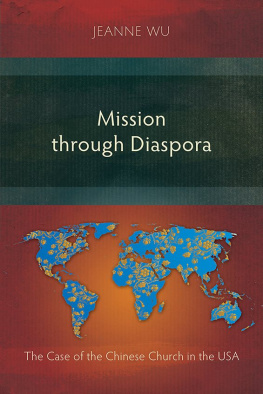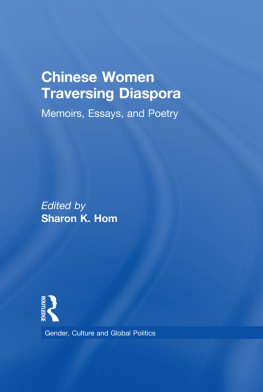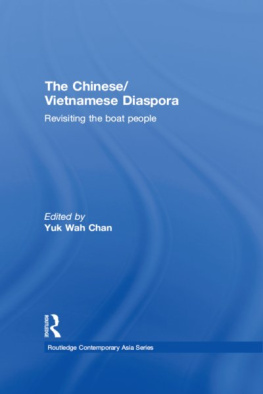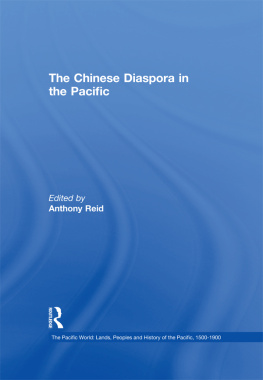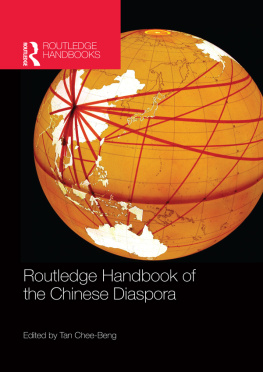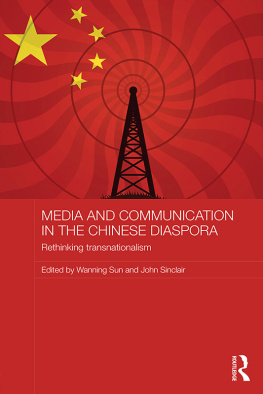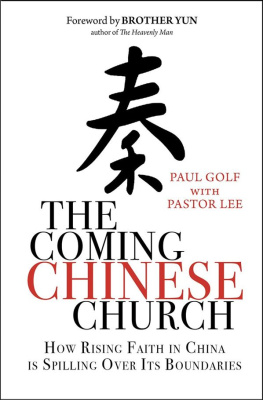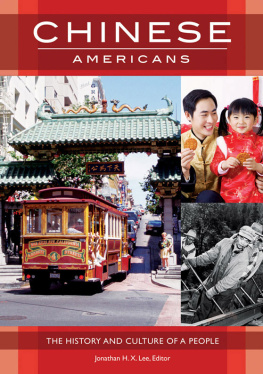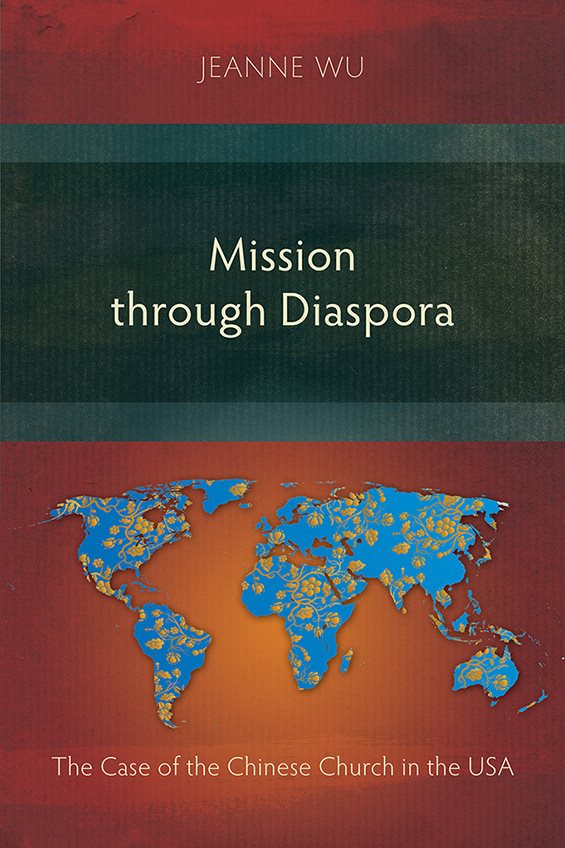There are more than 1,000 Chinese churches in the USA now and the number is still increasing! Research is needed to understand the rise and influence of this emergent group and this book is a significant contribution to this understanding. Combining quantitative and qualitative methods, Jeanne Wu articulates convincingly how Chinese churches in the USA do mission in a globalized world. With clear theoretical framework and missiological insights, it will be a critical support to the advance of diaspora missiology.
Professor, Sociology Department & Center on Religion and Chinese Society, Purdue University, Indiana, USA
Professor of Philosophy of Religion and Intercultural Studies, Trinity Evangelical Divinity School, Deerfield, Illinois, USA
Mission through Diaspora
The Case of the Chinese Church in the USA
Jeanne Wu
2016 by Jeanne Wu
Published 2016 by Langham Monographs
an imprint of Langham Creative Projects
Langham Partnership
PO Box 296, Carlisle, Cumbria CA3 9WZ, UK
www.langham.org
ISBNs:
978-1-78368-109-9 Print
978-1-78368-864-7 Mobi
978-1-78368-178-5 ePub
978-1-78368-179-2 PDF
Jeanne Wu has asserted her right under the Copyright, Designs and Patents Act, 1988 to be identified as the Author of this work.
All rights reserved. No part of this publication may be reproduced, stored in a retrieval system or transmitted, in any form or by any means, electronic, mechanical, photocopying, recording or otherwise, without the prior written permission of the publisher or the Copyright Licensing Agency.
All Scripture quotations, unless otherwise indicated, are taken from the Holy Bible, New International Version, NIV. Copyright 1973, 1978, 1984, 2011 by Biblica, Inc. Used by permission of Zondervan.
British Library Cataloguing in Publication Data
A catalogue record for this book is available from the British Library
ISBN: 978-1-78368-109-9
Cover & Book Design: projectluz.com
Langham Partnership actively supports theological dialogue and a scholars right to publish but does not necessarily endorse the views and opinions set forth, and works referenced within this publication or guarantee its technical and grammatical correctness. Langham Partnership does not accept any responsibility or liability to persons or property as a consequence of the reading, use or interpretation of its published content.
Converted to eBook by EasyEPUB
To the Chinese church in the USA
Acknowledgments
I am grateful for the wisdom and encouragement from my mentor, Dr Bob Priest, the love and care of my husband, Scott, and the support in various ways from the Chinese churches in the USA. Without them I could not have finished my studies. Soli Deo Gloria!
Chapter 1
Introduction
Diaspora Mission and Diaspora Missiology have become popular terminology recently among missiologists. Diaspora was included on the agenda of the Third Lausanne Congress in Cape Town in 2010, during which the Lausanne Global Diaspora Network Advisory Board was formed. The Evangelical Missiology Society (EMS) chose Diaspora Missiology as the national theme in 2014. Diaspora missiology raises questions such as, Who is moving? Why are they moving? and How does their movement impact mission work? In the article, Diaspora Missiology, Enoch Wan provides statistical data to identify the moving people groups, and the push and pull factors that move people.
But diaspora mission is more than outreach to migrants; it can also be mission by diaspora. In the Chinese context, overseas Chinese have more religious resources and freedom than Chinese people in China, and therefore the Chinese mission movement is predominantly carried out by Chinese diaspora. As Wan concludes in his study, the numerical data shows two missiological trends of Chinese diaspora: the emergence of both mission opportunities among them and the potentials in mission participation by them.
Wan further summarizes these strategies and practices of diaspora missions as missions to the diaspora, missions through the diaspora, and missions by and beyond diaspora. Missions to the diaspora is mission which reaches out to new immigrants or migrants such as international students or workers; missions through the diaspora refers to new immigrants or migrants reaching out to their kinsmen in their country of origin or other countries; missions by and beyond diaspora is cross-cultural mission done by diaspora reaching out to people who are not their kinsmen.
Chinese Christians and church leaders have often observed that Chinese churches in the US invest their resources mainly in missions related to Chinese ministries, whether long-term or short-term mission. In the article, It Is Time to Reflect: Rethink the Mission Strategy of Chinese Church, Tsu-Kung Chuang, a senior pastor of a Chinese church on the East Coast, provides several examples of overseas Chinese doing missions to Chinese, commenting that it is common that overseas Chinese churches spend most of their mission budget on Chinese missions. This kind of transnational network opens the door for US Chinese churches to carry out short-term missions overseas. We may call this kind of practice short-term mission as transnationalism.
Zephaniah Yu, the director of the Chinese mission agency Gospel Operation International, wrote an article regarding the strategy of Chinese mission. He lists four stages of missions from his perspective (examples are added):
(I) Local Local missions to a people group of the same culture in the same place (e.g. Chinese Christians in Chicago reaching out to new Chinese immigrants in Chicago).
(II) Local Global missions to a people group of near or different culture in the same place (e.g. Chinese Christians in Chicago reaching out to new Indonesian immigrants in Chicago).
(III) Global Local missions to a people group of the same or near culture in different places (e.g. Chinese Christians in Chicago reaching out to Chinese who live in Germany).
(IV) Global Global missions to a people group of different cultures in different places (e.g. Chinese Christians in Chicago reaching out to Indonesians in Indonesia).
Yus model of different stages of mission is similar to the E-1, E-2 and E-3 model developed by Ralph Winter:
E-1: Evangelism of people outside the church but within ones culture. Only one barrier is crossed: the stained-glass membership boundaries of the church.
E-2: Evangelism of people of different but similar cultures. Two barriers are crossed: The stained-glass barrier and an additional cultural distance sufficient to require separate church fellowships.
E-3: Evangelism of people of radically different cultures. To emphasize the greater cultural distance of an evangelist attempting to communicate to a radically different and potentially hostile environment, it is supposed that evangelists attempt to cross at least three barriers in E-3 efforts.

